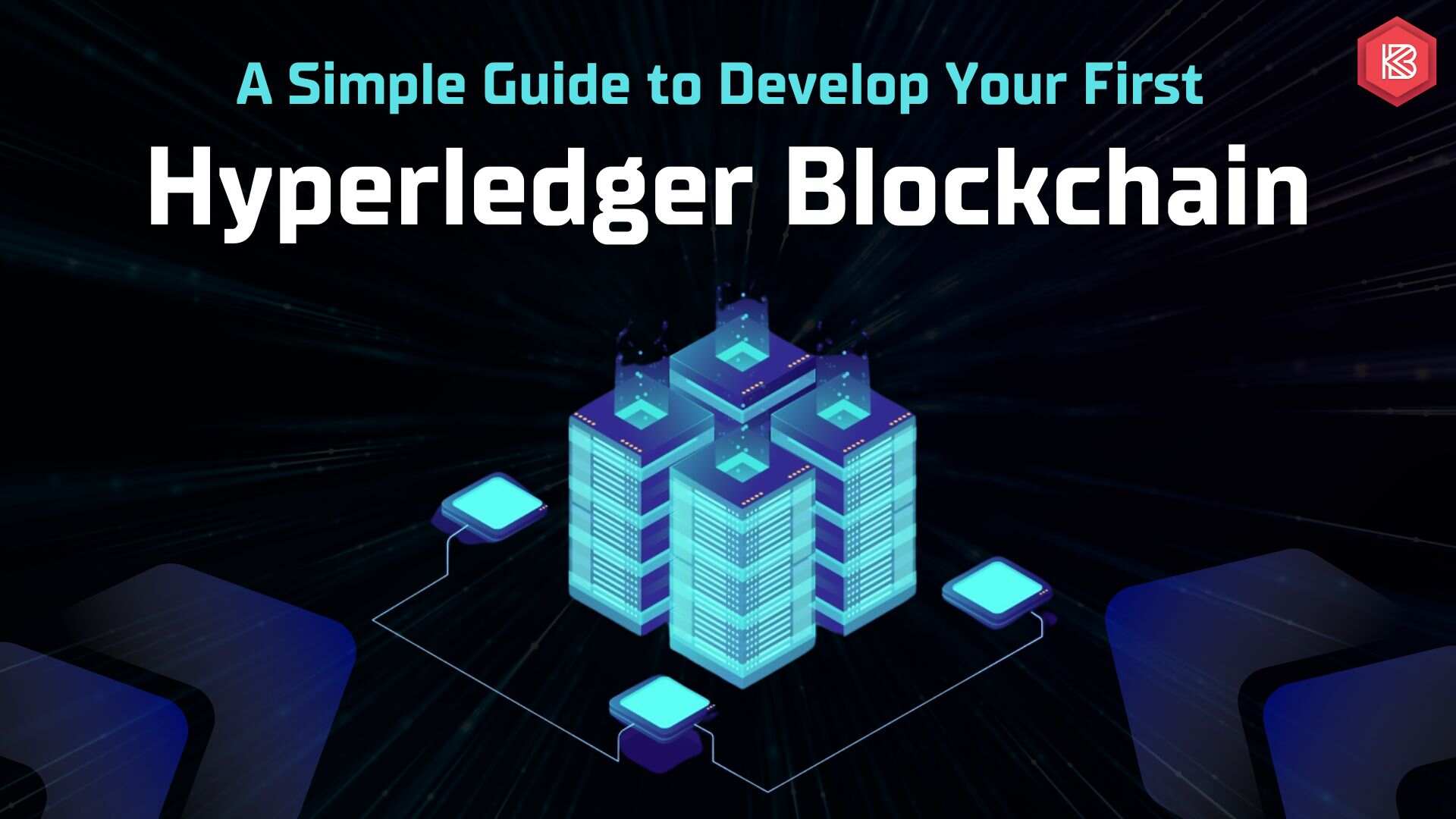A Simple Guide to Develop Your First Hyperledger Blockchain

Hyperledger provides a platform for creating customized blockchain offerings based on enterprise wishes. Unlike other systems used to expand blockchain-based software, Hyperledger benefits from creating a stable and personalized blockchain community.
- It was created to support the development of blockchain-based distributed ledgers.
- It includes several enterprise-ready permissioned blockchain platforms.
- It is a global collaboration to develop efficient and reliable blockchain and distributed technology frameworks.
Planning the Hyperledger Projects
There are many projects within the Hyperledger project. These projects include:
Hyperledger Fabric: Hyperledger Fabric is designed as a basis for growing applications and solutions with a modular architecture. It offers many benefits like allowed networks, confidential transactions, etc.
Hyperledger Sawtooth: This is an open-source task and is used as an organization-level blockchain machine to construct and perform distributed ledger packages. Hyperledger Sawtooth supports numerous consensus algorithms inclusive of PBFT and PoET.
Hyperledger Indy: It provides many libraries, tools, and reusable components to create distributed identities.
Hyperledger Iroha: This is a blockchain platform designed for infrastructure initiatives that require dispensed ledger generation. It is used to create identification management systems such as country-wide identifiers. It can be integrated with Linux, macOS, and Windows structures.
Hyperledger Burrow: This is a framework for executing smart contracts on permissioned blockchains. Hyperledger Burrow targets to facilitate cross-industry packages of clever contracts. It is constructed around the BFT consensus algorithm.
Hyperledger Caliper: This is a blockchain benchmarking device that lets users measure the performance of a blockchain implementation against predefined use cases. It generates reviews that include several performance metrics for evaluation when using blockchain solutions such as Hyperledger Burrow, Hyperledger Fabric, Hyperledger Iroha, etc.
Hyperledger Cello: It works as a practical blockchain dashboard that reduces the effort required to create, manipulate, and use blockchains. It offers a practical console for green blockchain management.
Hyperledger Explorer: It is a person-pleasant net application device used to view, invoke, install, or question the blocks, associated information, and community facts stored inside the ledger. It is considered an easy way for users to view the network statistics wanted for the blockchain.
Hyperledger Besu: This is an Ethereum client designed to be business enterprise-grade for both public and personal blockchain networks. It offers many beneficial capabilities like EVM, a couple of authorization protocols, privacy transaction management that guarantees transaction privacy, and many others.
Advantages of Hyperledger
- Flexibility: Hyperledger offers first-rate flexibility and modularity, permitting builders to customize and configure the platform in step with their specific desires.
- Security: Hyperledger focuses closely on protection and gives capabilities along with access control, identification management, and encryption. Therefore, it’s far more appropriate for business programs that require an excessive stage of protection.
- Scalability: Hyperledger is designed to control large agency packages and may support heaps of transactions per second.
- Privacy: Hyperledger permits the creation of personal, permissioned blockchain networks, because of this, only legal participants can get the right of access to the network’s records.
- Interoperability: Hyperledger affords a common platform for constructing blockchain programs and facilitating integration with different systems and programs.
Disadvantages of Hyperledger
- Complexity: Deploying and maintaining Hyperledger may be tough, specifically for agencies new to blockchain technology. This can also require tremendous technical understanding and resources.
- Limited Decentralization: Only legal events can take part in the network, so Hyperledger blockchain is a permission blockchain platform. While this may enhance safety and privacy, it also means that the community is less decentralized than public blockchain structures.
- Limited Community: Although Hyperledger has a developing community of builders and individuals, it’s far nevertheless smaller than some different blockchain structures.
- Limited Smart Contract Functionality: Hyperledger offers constrained Smart contract functionality compared to three other blockchain platforms. While this may be enough in some instances, it can be disadvantageous for corporations that want superior smart-agreement talents.
What is Hyperledger Fabric?
Hyperledger Fabric is one of the Hyperledger blockchain initiatives. Like special blockchain technology, it has a ledger, makes use of smart contracts, and is a tool through which members verify their transactions.
Hyperledger Fabric units itself other than other blockchain systems because it is private and permissioned. Rather than an open, permissionless machine that permits unknown identities to participate in the community (which calls for protocols that include “proof of work” to verify transactions and stabilize the community), participants of the Hyperledger Fabric community join via a relied-on membership carrier issuer. (MSP).
Hyperledger Fabric also offers the potential to create channels, permitting a group of members to create a separate ledger of transactions. This is a particularly important capability for networks where some participants may be competitors and do not want all participants to know what they are doing—for example, a special price they offer to some participants but not to others. When two participants form a channel, those participants have copies of the ledger for that channel.
Smart Card
Hyperledger Fabric smart contracts are written in chain code and invoked by an off-the-block application when the application needs to interact with the ledger. For the most part, the chain code only interacts with the ledger database component, the state of the world (such as making a query), not the event log. chain code can be implemented in several programming languages. Currently, Go, Node.js, and Java chaincode are supported.
Consensus
Transactions have to be entered into the ledger within the order in which they occur, even supposing they are among exclusive sets of individuals within the network.
For this to manifest, a chain of transactions must be established and a way carried out to reject bad transactions that can be mistakenly (or maliciously) introduced to the ledger. This is a properly-studied location of PC science, and there are many approaches to reap this, every with distinct trade-offs. For instance, PBFT (Practical Byzantine Fault Tolerance) can offer a mechanism for file copies to talk with each other so that each replica remains steady in the event of corruption.
Alternatively, in Bitcoin, ordering is done through a process called mining, where competing computers compete to solve a cryptographic puzzle that determines the subsequent build order of all processes. Hyperledger Fabric is designed to allow network initiators to choose a consensus mechanism that best represents the relationships between participants. As with privacy, needs vary from networks with highly structured relationships to more equal relationships.
Shared Ledger
Hyperledger Fabric has a ledger subsystem that consists of components: the world state and the event log. Each participant has a copy of the ledger for each Hyperledger Fabric network they belong to. The world state component describes the current state of the ledger. This is the general ledger database. The event log records all the events that led to the current value of the state of the world; it is the history of the renewal of the world state. The ledger is, therefore, a combination of the world country database and event log history. The world state repository must be changed in the ledger. By default, this is the database to store key values in LevelDB. The event log does not need to be connected. It simply stores the previous and subsequent values in the ledger database used in the blockchain network.
Privacy
Depending on the needs of the community, members in a Business-to-business (B2B) community may be very sensitive to the statistics being shared. In other networks, privacy is not a major concern. Hyperledger Fabric supports networks where privacy (using channels) is a core functional requirement, as well as relatively open networks.
Defining the Hyperledger Tool
Hyperledger has many tools for building Blockchain applications. Here is a detailed list of their descriptions and specific use cases.
Hyperledger Composer
Application Development Framework (ADF) for building Blockchain enterprise networks using the Hyperledger Fabric framework. Hyperledger Composer empowers business owners and developers to create smart contracts and Blockchain applications to solve business problems. This tool can be used to model enterprise networks, including assets and transactions, and integrate existing systems and data with Blockchain applications.
Hyperledger Quilt
This tool primarily facilitates the transfer of value or interoperability between distributed and non-distributed ledgers. With Hyperledger Quilt, the values of a user registered in one Blockchain network can be securely transferred to another user registered in another Blockchain network. Based on the Interledger Protocol (ILP), this tool supports the routing of payments between different registries of digital assets, separating senders and recipients from the risk of intermediary errors..
Hyperledger Caliper
Hosted by the Linux Foundation itself, Hyperledger Caliper is a blockchain benchmarking tool that allows users to tune the performance of specific blockchain applications for predefined use cases. This tool generates reports that include performance metrics. The results of these metrics can be used to build and implement framework-based frameworks in other Hyperledger projects.
Hyperledger Cello
This modular blockchain toolkit helps design and deploy Blockchain-as-a-Service platforms to deliver customizable Blockchain networks more easily, quickly, and seamlessly. The panels provided by the toolkit allow you to monitor system health, adjust thread counts, scale resources, and perform some important but difficult tasks. This tool can also manage the lifecycle of blockchains. Assuming you are an infrastructure engineer, Hyperledger Cello is your go-to tool for managing blockchain networks from an IT perspective.
Hyperledger Blockchain Explorer
This tool is an explorer whose functions and features can be used to view, invoke, deploy, or query blocks, transactions and related data, network data, chain codes, and transaction families. It also supports Rest APIs for access-denial information, events, peer state, event-channel information, channel-specific blocking counts, channel creation and updating, and event-specific channel creation. The Hyperledger Blockchain Explorer not only provides visibility but also facilitates interaction with the Hyperledger Fabric network.
Final Thoughts
In precis, Hyperledger is a collaborative and modern initiative that connects builders around the arena to boost the improvement of open-supply blockchain technologies. Its customizable and modular structure facilitates efficient Blockchain Development, enabling the creation of innovative solutions tailored to various industry needs. As blockchain adoption grows across multiple sectors, Hyperledger is ideally positioned to lead the advancement of this game-changing technology.
 Discuss Project!
Discuss Project!